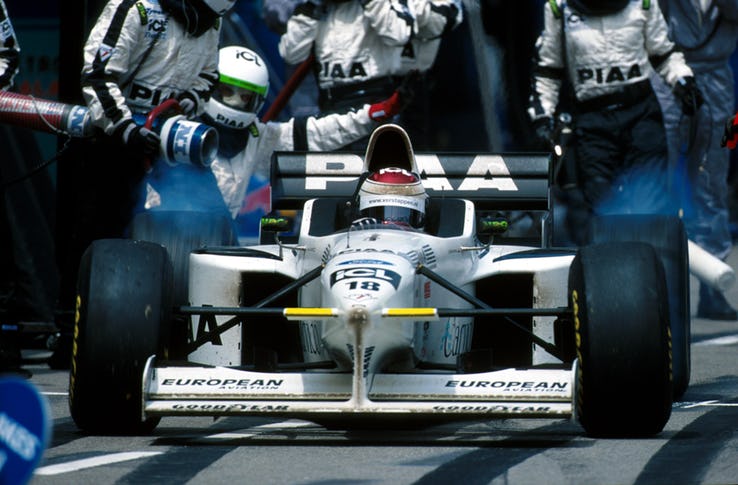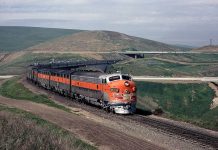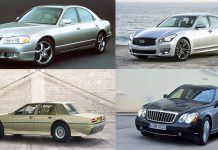20 Strange Cars That Were Banned From Racing
Here are 20 weird ways that race cars have been banned from the track.
20 1984 CHEVROLET CORVETTE (C4)
 In the late 1980s, the C4 Chevy Corvette was one of the most dominant cars in the SCCA Stock GT race car series, completely owning the podium in the Playboy and Escort Endurance Championship from 1985 to 1987. The Corvette was so dominant that it beat Porsche 29-0 during that three-year span, and we’re talking about Porsche, one of the best racing companies of all time. The C4 Corvette had handling that was out of this world, excellent speed, and a 0.9-G cornering, all powered by a reliable Chevy V8 small-block engine. In the end, it was penalized for winning so much, and its dominance wasn’t good for viewer turnout, which led to the car being exiled from racing.
In the late 1980s, the C4 Chevy Corvette was one of the most dominant cars in the SCCA Stock GT race car series, completely owning the podium in the Playboy and Escort Endurance Championship from 1985 to 1987. The Corvette was so dominant that it beat Porsche 29-0 during that three-year span, and we’re talking about Porsche, one of the best racing companies of all time. The C4 Corvette had handling that was out of this world, excellent speed, and a 0.9-G cornering, all powered by a reliable Chevy V8 small-block engine. In the end, it was penalized for winning so much, and its dominance wasn’t good for viewer turnout, which led to the car being exiled from racing.
19 1967 CHEVROLET CHEVELLE
 Smokey Yunick was a master of reading and understanding the racing rulebook, and then figuring out ways to subvert and bend those rules. He loved to follow the “spirit” of the law, rather than the “letter,” as they say. According to legends about Smokey, he modified the bodywork of his ’67 Chevy Chevelle by adding little lips, winglets, and smoothing the rough edges of the car, to put more speed into it. In front of NASCAR officials, he measured the car and compared it to the measurements from a test car that was parked in the parking lot, and the specifications matched the legal template perfectly. But the officials weren’t aware that the test car also belonged to Smokey, and so his ’67 was banned from racing.
Smokey Yunick was a master of reading and understanding the racing rulebook, and then figuring out ways to subvert and bend those rules. He loved to follow the “spirit” of the law, rather than the “letter,” as they say. According to legends about Smokey, he modified the bodywork of his ’67 Chevy Chevelle by adding little lips, winglets, and smoothing the rough edges of the car, to put more speed into it. In front of NASCAR officials, he measured the car and compared it to the measurements from a test car that was parked in the parking lot, and the specifications matched the legal template perfectly. But the officials weren’t aware that the test car also belonged to Smokey, and so his ’67 was banned from racing.
18 CATERHAM SEVEN
 Caterham Seven is a car that was based on the Lotus Seven, a lightweight sports car sold in a kit and built by Lotus Cars from the 1950s to 1970s. For decades, the Caterham Seven dominated open class races in the UK, including a championship in 1986 by Kevin Foy, when the ban was temporarily lifted. In the ‘60s the car was banned in the US, and in the ‘70s it was banned in the UK. Caterham Cars ended up producing T-shirts that read “Caterham Seven, the car that’s ‘Too Fast to Race.’” The ban was eventually lifted again, until 2002, when the R400 Seven won its class by 10 laps at the 24 Hours of Nurburgring, which led to its ban once again.
Caterham Seven is a car that was based on the Lotus Seven, a lightweight sports car sold in a kit and built by Lotus Cars from the 1950s to 1970s. For decades, the Caterham Seven dominated open class races in the UK, including a championship in 1986 by Kevin Foy, when the ban was temporarily lifted. In the ‘60s the car was banned in the US, and in the ‘70s it was banned in the UK. Caterham Cars ended up producing T-shirts that read “Caterham Seven, the car that’s ‘Too Fast to Race.’” The ban was eventually lifted again, until 2002, when the R400 Seven won its class by 10 laps at the 24 Hours of Nurburgring, which led to its ban once again.
17 DAUER PORSCHE 962
 The rules changed in the World Sportscar Championship in 1992, after the numbers of the dominant Porsche 962 started to dwindle. The new rules crippled the remaining Porsche 962s and made the cars unable to compete at Le Mans. But in 1993, the ACO instituted new GT-Class rules and Porsche found a loophole, after the 962s were modified and made to run on public roads, which made them eligible to race (and win) again. Their larger fuel tanks allowed them to stay on the track longer than faster opponents, giving the 962 an overall win in the 1993 GT-Class. ACO changed the rules again immediately, to ban the 962s for good.
The rules changed in the World Sportscar Championship in 1992, after the numbers of the dominant Porsche 962 started to dwindle. The new rules crippled the remaining Porsche 962s and made the cars unable to compete at Le Mans. But in 1993, the ACO instituted new GT-Class rules and Porsche found a loophole, after the 962s were modified and made to run on public roads, which made them eligible to race (and win) again. Their larger fuel tanks allowed them to stay on the track longer than faster opponents, giving the 962 an overall win in the 1993 GT-Class. ACO changed the rules again immediately, to ban the 962s for good.
16 1997 TYRRELL 025
 The Tyrrell 025 was a technologically advanced F1 car, if not a spectacular race car itself. It was equipped with a V8 engine, a carbon fiber body, and a double wishbone suspension. Its career was pretty middle-of-the-herd, with the car winning just two points at the Monaco Grand Prix in 1997. So if this car wasn’t so great at winning, then why was it banned? This is a case of safety concerns, rather than the car’s awesome record on the track. During races where the course required lots of downforce due to curves, the Tyrrell’s team would put big X-wings on the body near the cockpit. Other teams followed suit, and the X-wings caused safety concerns by catching pit crews when the cars came driving in!
The Tyrrell 025 was a technologically advanced F1 car, if not a spectacular race car itself. It was equipped with a V8 engine, a carbon fiber body, and a double wishbone suspension. Its career was pretty middle-of-the-herd, with the car winning just two points at the Monaco Grand Prix in 1997. So if this car wasn’t so great at winning, then why was it banned? This is a case of safety concerns, rather than the car’s awesome record on the track. During races where the course required lots of downforce due to curves, the Tyrrell’s team would put big X-wings on the body near the cockpit. Other teams followed suit, and the X-wings caused safety concerns by catching pit crews when the cars came driving in!
15 CHAPARRAL 2E
 This race car was an innovation by the expert cheater Jim Hall, whose other work we will showcase here. Many cars that have been banned through the years of racing have been because the engine or downforce was “modified.” For the Chaparral 2E, this is a case of messing with the downforce, by attaching a moveable spoiler that the driver could manipulate. To grip corners, the spoiler could be put at a steep angle for extra downforce, or for straight parts of the track, a less aggressive angle could be used. As a result of this high-tech spoiler, the Cam-Am racing series declared the Chaparral 2E illegal because of “outlawed aerodynamic parts” that moved.
This race car was an innovation by the expert cheater Jim Hall, whose other work we will showcase here. Many cars that have been banned through the years of racing have been because the engine or downforce was “modified.” For the Chaparral 2E, this is a case of messing with the downforce, by attaching a moveable spoiler that the driver could manipulate. To grip corners, the spoiler could be put at a steep angle for extra downforce, or for straight parts of the track, a less aggressive angle could be used. As a result of this high-tech spoiler, the Cam-Am racing series declared the Chaparral 2E illegal because of “outlawed aerodynamic parts” that moved.
14 1988 WRC TOYOTA CELICA GT-FOUR
 In 1988, Toyota began racing the World Rally Championship (WRC) Celica GT-Four and won its first race in 1989, in Australia. As time passed, the rally cars kept getting faster, raising safety concerns for drivers and, mostly, racing fans that stood near the edge of the road. The FIA required that cars have restrictor plates in their turbochargers, in 1995, which would limit air flow into the turbocharger, thus slowing power output. Toyota’s engineers found a way to make the restrictor plate move out of the way as the car gained speed, but the FIA discovered the subterfuge and banned the car from rally racing.
In 1988, Toyota began racing the World Rally Championship (WRC) Celica GT-Four and won its first race in 1989, in Australia. As time passed, the rally cars kept getting faster, raising safety concerns for drivers and, mostly, racing fans that stood near the edge of the road. The FIA required that cars have restrictor plates in their turbochargers, in 1995, which would limit air flow into the turbocharger, thus slowing power output. Toyota’s engineers found a way to make the restrictor plate move out of the way as the car gained speed, but the FIA discovered the subterfuge and banned the car from rally racing.
13 GROUP B RALLY CARS
 This is an instance of a whole group of cars being disqualified from racing. The Group B rally cars, like the Lancia Delta S4, weren’t banned because of a competitive advantage, but for safety issues. Group B rally cars could push upwards of 500 hp and go well over 100 mph, which is dangerous because these cars raced on public roads, dirt trails, and other paths. On these types of race tracks, speed, control, and communication between driver and co-driver had to be absolute. Rally fans lined up on the side of the roadway, and many kept getting hurt (sometimes fatally) from the rally cars.
This is an instance of a whole group of cars being disqualified from racing. The Group B rally cars, like the Lancia Delta S4, weren’t banned because of a competitive advantage, but for safety issues. Group B rally cars could push upwards of 500 hp and go well over 100 mph, which is dangerous because these cars raced on public roads, dirt trails, and other paths. On these types of race tracks, speed, control, and communication between driver and co-driver had to be absolute. Rally fans lined up on the side of the roadway, and many kept getting hurt (sometimes fatally) from the rally cars.
12 1997 CHEVROLET “T-REX” MONTE CARLO
 The 1997 Chevrolet “T-Rex” Monte Carlo from Hendrix Motorsports is one of the most infamous examples of a race car being banned for being too “radical.” In 1997, Jeff Gordon drove the Monte Carlo in the All-Star race. It was designed by Rex Stump, a former Corvette engineer. Besides getting its name from Stump, the car also had a Jurassic Park-themed paint scheme to promote the movie release. Gordon dominated the race, but at the post-race inspection, NASCAR officials told the Hendrix crew they shouldn’t race the car again, even though it complied with all NASCAR rules. They ended up deeming it too “radical” to race.
The 1997 Chevrolet “T-Rex” Monte Carlo from Hendrix Motorsports is one of the most infamous examples of a race car being banned for being too “radical.” In 1997, Jeff Gordon drove the Monte Carlo in the All-Star race. It was designed by Rex Stump, a former Corvette engineer. Besides getting its name from Stump, the car also had a Jurassic Park-themed paint scheme to promote the movie release. Gordon dominated the race, but at the post-race inspection, NASCAR officials told the Hendrix crew they shouldn’t race the car again, even though it complied with all NASCAR rules. They ended up deeming it too “radical” to race.
11 1970 CHAPARRAL 2J
 This was another ingenious invention by the legendary Jim Hall, who was known for having a fleet of Chaparral cars, all with unique oddities. The 2J was one of the fan favorites of his because it represented the pinnacle of Chaparral methodical madness, and Hall’s brilliance. The race car used two fans that were powered by a snow blower engine in order to “suck” the car down to the ground. The resulting downforce was so massive that, even at low speeds, and even though mechanical hiccups prevented the car from ever winning a race, the downforce system was banned before people could even see its full potential.
This was another ingenious invention by the legendary Jim Hall, who was known for having a fleet of Chaparral cars, all with unique oddities. The 2J was one of the fan favorites of his because it represented the pinnacle of Chaparral methodical madness, and Hall’s brilliance. The race car used two fans that were powered by a snow blower engine in order to “suck” the car down to the ground. The resulting downforce was so massive that, even at low speeds, and even though mechanical hiccups prevented the car from ever winning a race, the downforce system was banned before people could even see its full potential.
10 JUMPING JACK DRAGSTER
 “Sneaky Pete” Robinson was the creator of this dragster, and with a name like that, it’s easy to imagine the kind of shenanigans he would get up to for the sake of winning. With the “Jumping Jack” dragster, the innovation that racing officials thought crossed the line was really quite simple. As Robinson lined up at the start of the race, he’d use a simple lever attached to folding jack stands to raise the rear end of his car. This allowed him to rev his engine and get his rear tires spinning before the series of yellow countdown lights hit green. Once the race started, he’d drop the rear end and his tires would hit the ground running, or jumping, as it were.
“Sneaky Pete” Robinson was the creator of this dragster, and with a name like that, it’s easy to imagine the kind of shenanigans he would get up to for the sake of winning. With the “Jumping Jack” dragster, the innovation that racing officials thought crossed the line was really quite simple. As Robinson lined up at the start of the race, he’d use a simple lever attached to folding jack stands to raise the rear end of his car. This allowed him to rev his engine and get his rear tires spinning before the series of yellow countdown lights hit green. Once the race started, he’d drop the rear end and his tires would hit the ground running, or jumping, as it were.
9 1978 BRABHAM BT46B
 The 1978 Brabham BT46B used a similar system as that of the Chaparral 2J, but this one was designed by F1 legend Gordon Murray. For a single season in 1978, Murray used the system. The car was known for having a huge fan driven off the gearbox in order to grip the car to the ground, much like the Chaparral 2J, and it allowed the driver to corner at virtually any speed he wanted. Niki Lauda won the Swedish Grand Prix during the BT46B’s first race, with Lotus and other teams throwing a tantrum after the race, calling foul. The resulting ban ended the short reign of the “vacuum car” in Formula One racing.
The 1978 Brabham BT46B used a similar system as that of the Chaparral 2J, but this one was designed by F1 legend Gordon Murray. For a single season in 1978, Murray used the system. The car was known for having a huge fan driven off the gearbox in order to grip the car to the ground, much like the Chaparral 2J, and it allowed the driver to corner at virtually any speed he wanted. Niki Lauda won the Swedish Grand Prix during the BT46B’s first race, with Lotus and other teams throwing a tantrum after the race, calling foul. The resulting ban ended the short reign of the “vacuum car” in Formula One racing.
8 1969 DODGE CHARGER DAYTONA/1979 PLYMOUTH SUPERBIRD
 The Dodge Chargers from the ‘60s and ‘70s were classic American muscle, but the Dodge Charger Daytona was a completely different animal. It had a giant wing on its rear end and a massive nosepiece that made the car more aerodynamic. Dodge developed it to win NASCAR races, and it made the Daytona the first car to break 200 mph in a NASCAR race. It ended up winning so many races that it was banned, and its sibling, the 1970 Plymouth Road Runner Superbird, too. Mopar Aero owned these cars, and they were some of NASCAR’s most innovative car designers. The power limit on cars with wings came about in 1971, which means big wins and pointy noses disappeared from NASCAR forever.
The Dodge Chargers from the ‘60s and ‘70s were classic American muscle, but the Dodge Charger Daytona was a completely different animal. It had a giant wing on its rear end and a massive nosepiece that made the car more aerodynamic. Dodge developed it to win NASCAR races, and it made the Daytona the first car to break 200 mph in a NASCAR race. It ended up winning so many races that it was banned, and its sibling, the 1970 Plymouth Road Runner Superbird, too. Mopar Aero owned these cars, and they were some of NASCAR’s most innovative car designers. The power limit on cars with wings came about in 1971, which means big wins and pointy noses disappeared from NASCAR forever.
7 1992 NISSAN SKYLINE GT-R GROUP A

Fans from Japan have loved the Nissan Skyline GT-R for decades. The ’92 Skylines from Group A used turbocharged straight-6 engines and a genius all-wheel-drive system. In the ‘90s, the R32 Skyline GT-R was undefeated in its reign in the touring circuits of Australia. The governing body of the organization didn’t like the wins as much as the fans, and so the turbocharging and all-wheel-drive systems were banned, which ended the Skyline GT-R’s epic streak on top of the land down under. It takes a whole lot to disqualify a whole group of cars, but apparently too much winning is the quickest way to do that.
6 1968 LOTUS 56
 Graham Hill, from Britain, was a legendary racer who found himself behind the wheel of Andy Granatelli’s Lotus 56 4WD Turbine car at the Indianapolis Motor Speedway. Even though this car was turbine-powered, it never won the Indy 500. It crashed, but it still got enough attention and was fast enough to get itself banned after its one and only appearance in 1968. The car used a Pratt & Whitney turbine engine and four-wheel-drive system in order to qualify, and it led most of the race. A failed fuel pump is eventually what cut the car’s race short, just a few laps from the finish line. In response, four-wheel-drive and turbine were banned from the track.
Graham Hill, from Britain, was a legendary racer who found himself behind the wheel of Andy Granatelli’s Lotus 56 4WD Turbine car at the Indianapolis Motor Speedway. Even though this car was turbine-powered, it never won the Indy 500. It crashed, but it still got enough attention and was fast enough to get itself banned after its one and only appearance in 1968. The car used a Pratt & Whitney turbine engine and four-wheel-drive system in order to qualify, and it led most of the race. A failed fuel pump is eventually what cut the car’s race short, just a few laps from the finish line. In response, four-wheel-drive and turbine were banned from the track.
5 2001 BMW M3 GTR
 This was a more recent race car that used a straight-6 engine. The E46-generation BMW M3 was a masterpiece of automotive engineering and was dubbed the “Ultimate Driving Machine,” as BMW now calls all of its cars. The car didn’t qualify for the American Le Mans Series (ALMS), so they dropped a 500-hp V8 engine into a handful of cars to satisfy homologation requirements, and in order to beat all the competition. Then the ALMS changed the homologation requirement to just 100 road cars in 2002, which forced BMW to pull the plug on the absolutely dominant BMW M3 GTR.
This was a more recent race car that used a straight-6 engine. The E46-generation BMW M3 was a masterpiece of automotive engineering and was dubbed the “Ultimate Driving Machine,” as BMW now calls all of its cars. The car didn’t qualify for the American Le Mans Series (ALMS), so they dropped a 500-hp V8 engine into a handful of cars to satisfy homologation requirements, and in order to beat all the competition. Then the ALMS changed the homologation requirement to just 100 road cars in 2002, which forced BMW to pull the plug on the absolutely dominant BMW M3 GTR.
4 1967 PENSKE CHEVROLET CAMARO Z/28
 “Captain Nice,” aka Mark Neary Donohue Jr., was an American driver known for his ability to study the rulebook and find loopholes that he could exploit, in order to win close races. He was accused of outright cheating on multiple occasions. Most notably, his Penske Camaro Z/28 had a body panel that had been dripped in acid to reduce the car’s weight. A safety cage also gave the car extra rigidity. The Z/28 became one of the most notorious race cars in all o motorsports, so much so that the Trans-Am organizers banned every “lightweight” vehicle, even after Captain Nice managed to sneakily enter it into the race the following year, disguised as a 1968 model.
“Captain Nice,” aka Mark Neary Donohue Jr., was an American driver known for his ability to study the rulebook and find loopholes that he could exploit, in order to win close races. He was accused of outright cheating on multiple occasions. Most notably, his Penske Camaro Z/28 had a body panel that had been dripped in acid to reduce the car’s weight. A safety cage also gave the car extra rigidity. The Z/28 became one of the most notorious race cars in all o motorsports, so much so that the Trans-Am organizers banned every “lightweight” vehicle, even after Captain Nice managed to sneakily enter it into the race the following year, disguised as a 1968 model.
3 1973 PORSCHE 917/30
 This was another innovative car driven by Captain Nice. This is the one that proved that if a car is too fast for its own good, it will be banned. The Porsche 917/30 Cam-Am used a turbocharger, and a flat-12 engine from its Le Mans-winning 917, in order to produce a crazy 1300 horsepower. That was by far more than any other car on the track. Even nowadays, 55 years later, we don’t see many cars with that much horsepower. The Porsche embarrassed the previously-dominant McLaren team, and Cam-Am’s organizers imposed a fuel limit on turbochargers for the 1974 season. The Penske and Porsche teams were forced to pull out of the race.
This was another innovative car driven by Captain Nice. This is the one that proved that if a car is too fast for its own good, it will be banned. The Porsche 917/30 Cam-Am used a turbocharger, and a flat-12 engine from its Le Mans-winning 917, in order to produce a crazy 1300 horsepower. That was by far more than any other car on the track. Even nowadays, 55 years later, we don’t see many cars with that much horsepower. The Porsche embarrassed the previously-dominant McLaren team, and Cam-Am’s organizers imposed a fuel limit on turbochargers for the 1974 season. The Penske and Porsche teams were forced to pull out of the race.
2 1992 WILLIAMS FW14B
 Back in 1991, in Formula One, no one could catch up to Nigel Williams, due to the car’s innovative and advanced active suspension system. What made the system on the FW14B so unique was that it was programmed to anticipate surface changes on the race track, which was a technology that had never been seen before. Rival teams complained that it wasn’t fair, that it was too expensive to develop, and so the technology was banned in 1993. The FW14B also used a hydraulic system to adjust the suspension depending on the individual loads of each of the four tires, allowing the car to hunker down and grip the corners, or rise up slightly for less drag. For all these reasons, the car was banned.
Back in 1991, in Formula One, no one could catch up to Nigel Williams, due to the car’s innovative and advanced active suspension system. What made the system on the FW14B so unique was that it was programmed to anticipate surface changes on the race track, which was a technology that had never been seen before. Rival teams complained that it wasn’t fair, that it was too expensive to develop, and so the technology was banned in 1993. The FW14B also used a hydraulic system to adjust the suspension depending on the individual loads of each of the four tires, allowing the car to hunker down and grip the corners, or rise up slightly for less drag. For all these reasons, the car was banned.
1 IMSA CONSULIER GTP

Warren Mosler’s Consulier GTP had a short career on the track, but a magnificent racing record even so. It used a Dodge turbocharged 2.2 K-Car engine, which gave it great success on the track, consistently beating out name-brand drivers in factory-built Porsches and twin-turbo Callaway Corvettes. The Consulier GTP was so good that IMSA decided that they would lose viewership and sponsorships if they kept letting this upstart to beat all the competition so badly. So they first hit the Consulier with a 300-pound weight penalty before banning it outright in 1991. The car is often considered one of the most forgotten supercars from America.
References: jalopnik.com, hagerty.com, proctorcars.com, digitaltrends.com.
Source : www.thethings.com.


















